Stretching across eight countries and covering more than 750 miles (1,200km), the Alps are Europe’s most iconic mountain range. These formidable peaks form a natural arc through the heart of the continent, sweeping from southern France through Monaco, Italy, Switzerland, Liechtenstein, Germany, Austria and into Slovenia.
The region’s biological and geological diversity is staggering. You’ll encounter towering 4,000m+ peaks like Mont Blanc (4,805m/15,764 ft) and the Toblerone-shaped Matterhorn (4,478 m/14,692 ft). You’ll pass through valleys carved by ancient glaciers, traverse high-alpine tundra and pastures speckled with wildflowers. Many trails skirt deep blue lakes, or climb high passes into rocky lunarscapes.
But the Alps are not just a wilderness. They are a living landscape, home to around 14 million people. Each valley holds its own distinct character, from the German-speaking regions of Austria and Switzerland, to the French-influenced Chamonix Valley, the Italian-speaking Aosta region, and the Ladin communities in the Dolomites.

“There’s a really interesting point along the Haute Route where you cross the Augustbord Pass and have to change language,” says destination expert Grant Fulton. “You go from Zinal, in French-speaking Switzerland, and descend to Gruben in the next valley, which is German-speaking.”
Trekking in the Alps allows you to witness this remarkable diversity firsthand. Whether you’re threading through limestone spires in the Dolomites on the Alta Via 1, circling the mighty Mont Blanc on the Tour du Mont Blanc, or traversing high-altitude terrain on the Haute Route, each trail offers a distinct cultural and natural immersion.
But with such a wealth of options, choosing the right trek can feel overwhelming. This article compares five of the Alps’ most iconic routes: Tour du Mont Blanc; the Tour del Monte Rosa; the Matterhorn Circuit; Alta Via 1 and the Walker’s Haute Route. We’ll be comparing the distance, difficulty level, range of services and scenic highlights of each to help you find the one which best suits you.
Tour du Mont Blanc (TMB)
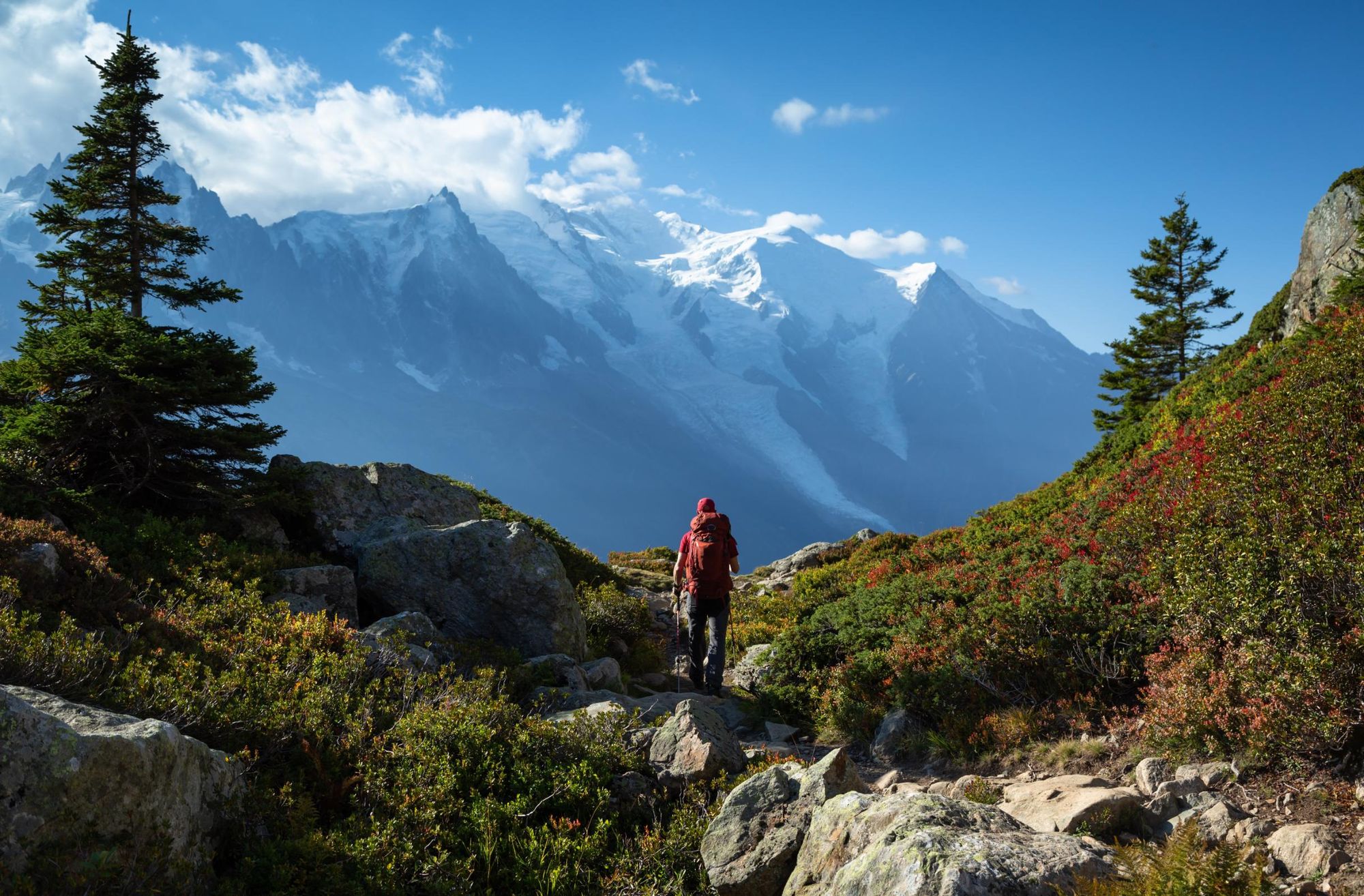
- Countries: France, Italy, Switzerland
- Distance: 105 miles (170 km)
- Duration: 9–12 days
- Difficulty: Challenging
The TMB is one of the famous long distance hiking trails in Europe; a high-altitude circuit that encircles the Mont Blanc massif, crossing through three countries in the process. It offers unparalleled views of the mighty Mont Blanc (4,805m/15,764 ft) and is renowned for its diverse scenery, from rugged mountain passes to verdant valleys, alpine lakes and chocolate box villages.
Starting and ending in Les Houches near Chamonix, the route crosses a suspension bridge over Bionnay Glacier to the villages of Les Contamines and Les Chapieux. It then traverses the Col de la Seigne on the French-Italian border, passing Rifugio Monte Bianco and heading to Courmayeur for views of Grandes Jorasses and Mont Dolent. The trail returns to Switzerland via the Italian Val Ferret, offering Mont Blanc views before reaching Refugio Walter Bonatti.

The route then traverses the High Balcon Val Ferret trail and climbs to the Grand Col Ferret (2,537m/ 8,323 ft) on the Italian-Swiss border, descending to La Fouly. Two options lead to Lac de Champex: the challenging Fenetre d’Arpette (2,665m/ 8,743 ft) or the easier Bovine Route. The final stretch crosses the Col de Balme back into France, traversing the Aiguille du Midi and Aiguilette des Possettes. There’s a final climb to the brilliant blue glacial waters of Lac Blanc, where you’ll also have impressive views of Mont Blanc. The route then climbs a rocky path to the Col du Brevent before a final descent to Chamonix.
Terrain & Difficulty Level
On the TMB you’ll cross 10 mountain passes, often climbing 800–1,200m (2,600–4,000 ft) per day. Trails are well-marked and maintained, but daily ascents and descents are substantial. No technical experience is required, but you should be fit and comfortable hiking 9–12 miles (15–20km) per day on uneven terrain.
Services
This is one of the most well supported treks in the Alps. While most hikers stay in mountain refuges, you can also hike the Tour du Mont Blanc and stay in hotels every night. There are good transport links along the route—including taxi transfers, cable cars and buses running along the valley floor—making it easy to do a shorter variant of the TMB.
Baggage transfer services are also available along the Tour du Mont Blanc, making it a suitable route even for those not wanting to carry a heavy backpack.

Recommended For
First time hikers in the Alps. You’ll have views of the iconic Mont Blanc, and get a feel for the diversity of alpine scenery. There are options to make the trek shorter or more comfortable (see ‘Services’ above), yet there’s still a good level of challenge and excitement.
The Walker’s Haute Route
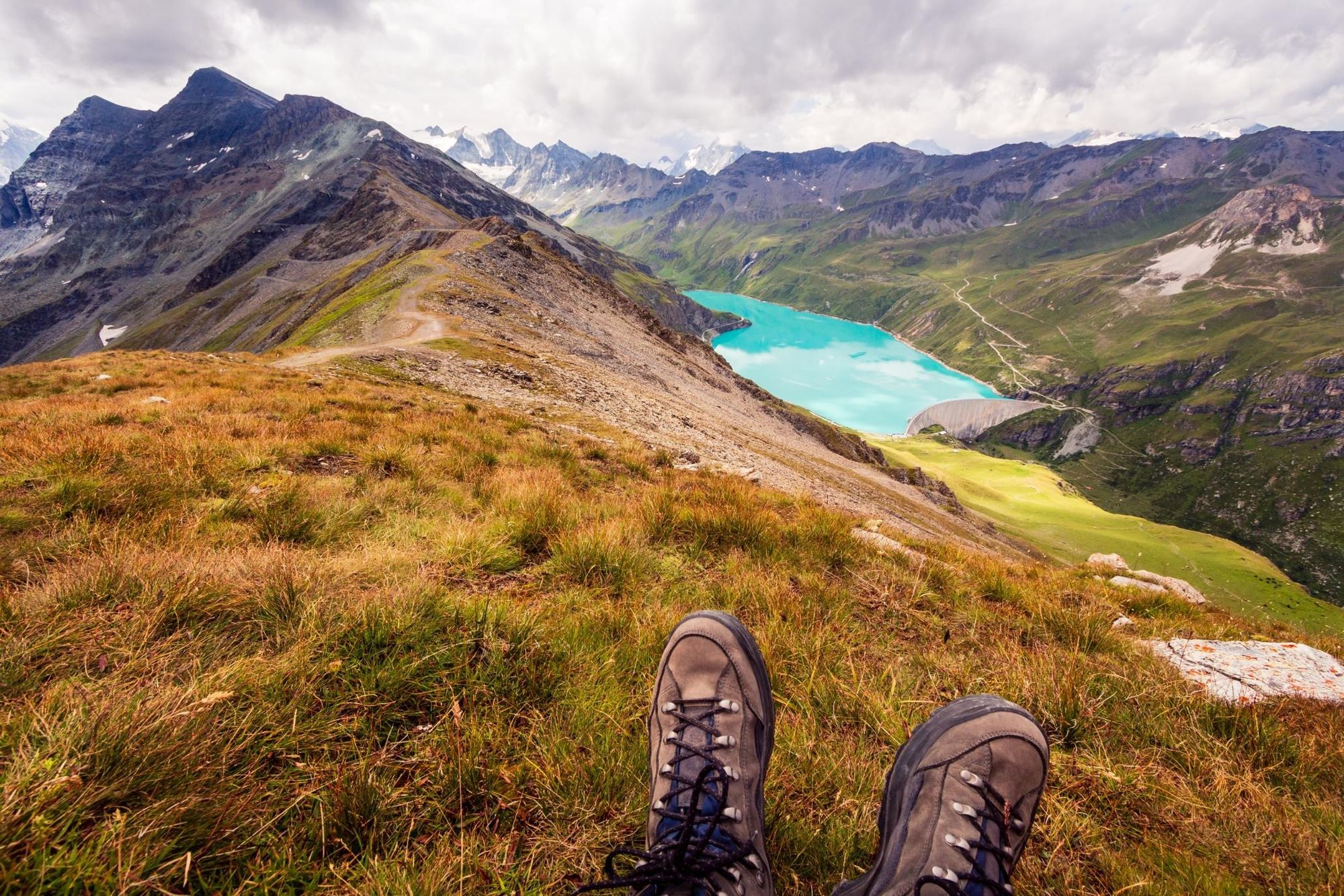
- Countries: France, Switzerland
- Distance: 137 miles (220km)
- Duration: 11–14 days
- Difficulty: Tough
Connecting the French town of Chamonix with Zermatt in Switzerland, the Walker's Haute Route is one of the Alps' most iconic long-distance treks. This 137-mile (220km) trail offers an array of alpine landscapes, from high mountain passes and sparse boulder fields to pastoral valleys. Trekkers will enjoy spectacular views of famous peaks like the distinctive Matterhorn (4,478 metres/14,692 ft) and Mont Blanc (4,805m/15,764 ft).
The first four stages, from Chamonix to Verbier, mirror the route of the Tour du Mont Blanc, albeit in reverse. From Verbier the route deviates—you’ll head over the Col de la Chaux, a rocky pass at an altitude of 2,940m (9,645 ft), descending the other side into the Grand Desert lunarscape.

You’ll climb up to Lac Dix, with its milky blue waters, over the Riedmatten pass, and descend to the town of Arolla. From here, you’ll pass Lac Bleu and some pretty mountain villages, before climbing up to the Col de Torrent (2,916m / 9,566 ft) and down to Zinal—in doing so, you’ll cross from French-speaking into German-speaking Switzerland. The final leg of the trek takes you through the Mattertal Valley along the famous Europaweg Trail to Zermatt, where you’ll have excellent views of the Matterhorn.
Terrain & Difficulty Level
The Haute Route is a serious undertaking. Unlike the circular Tour du Mont Blanc, this is a point-to-point traverse over high mountain passes, often above 2,800m. You’ll cover between 1,000–1,800m (3,280–5,906 ft) a day, and be hiking similar daily distances to the TMB, but for a longer period of time. You’ll need to deal with long rocky descents and encounter snow patches even in midsummer.
Services
The Haute Route is more remote than the TMB, so some stages of the hike are inaccessible by road. This makes baggage transfer difficult (it’s possible, but you won’t be reunited with your bag every night), and most guided groups do not offer it. Accommodation is limited to mountain refuges in some areas, although there is a wider variety of options in towns such as Verbier.

Recommended For
Those who have completed the Tour du Mont Blanc, and are looking for a more challenging option in a similar part of the Alps.
In Summary: Haute Route vs TMB
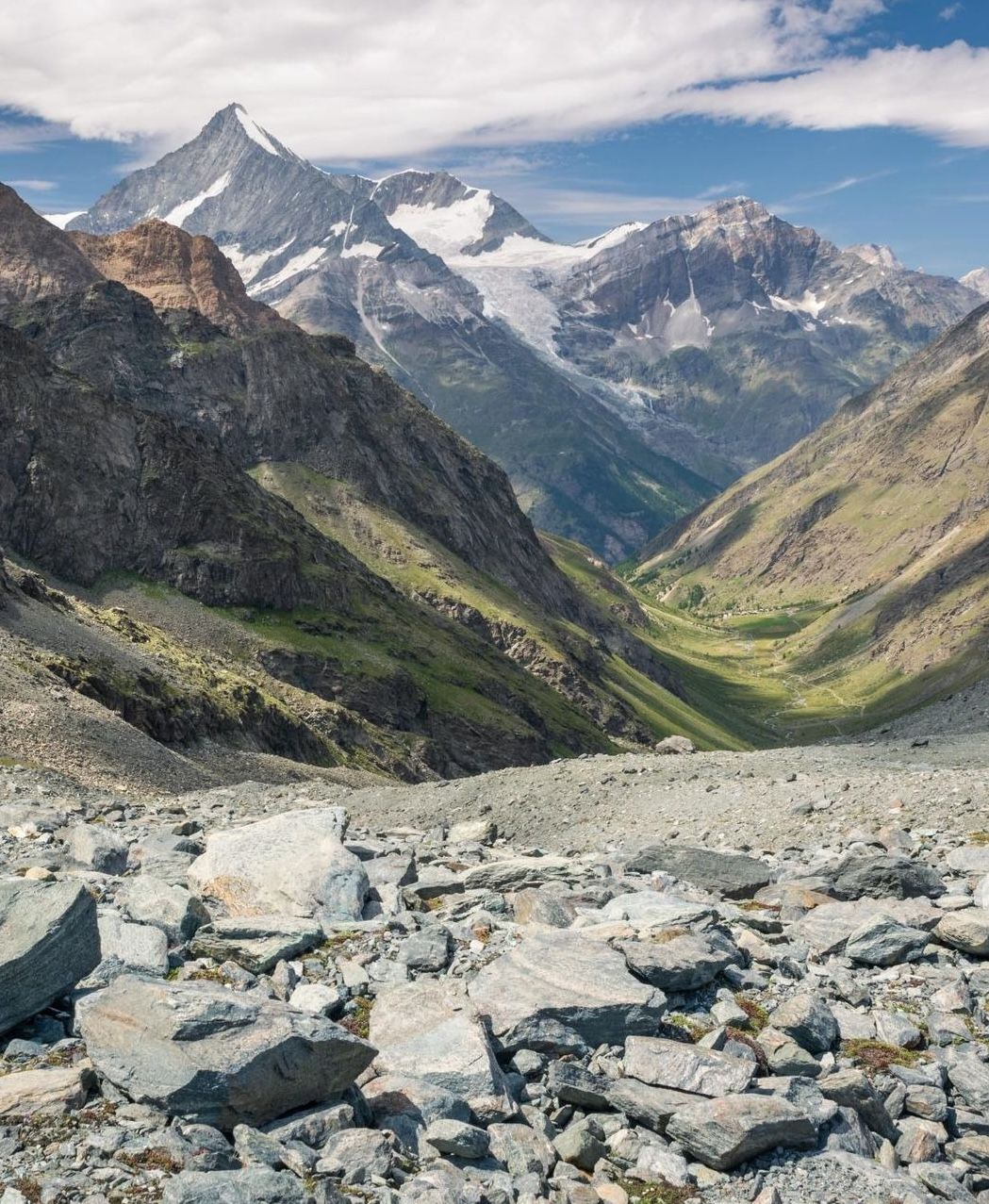
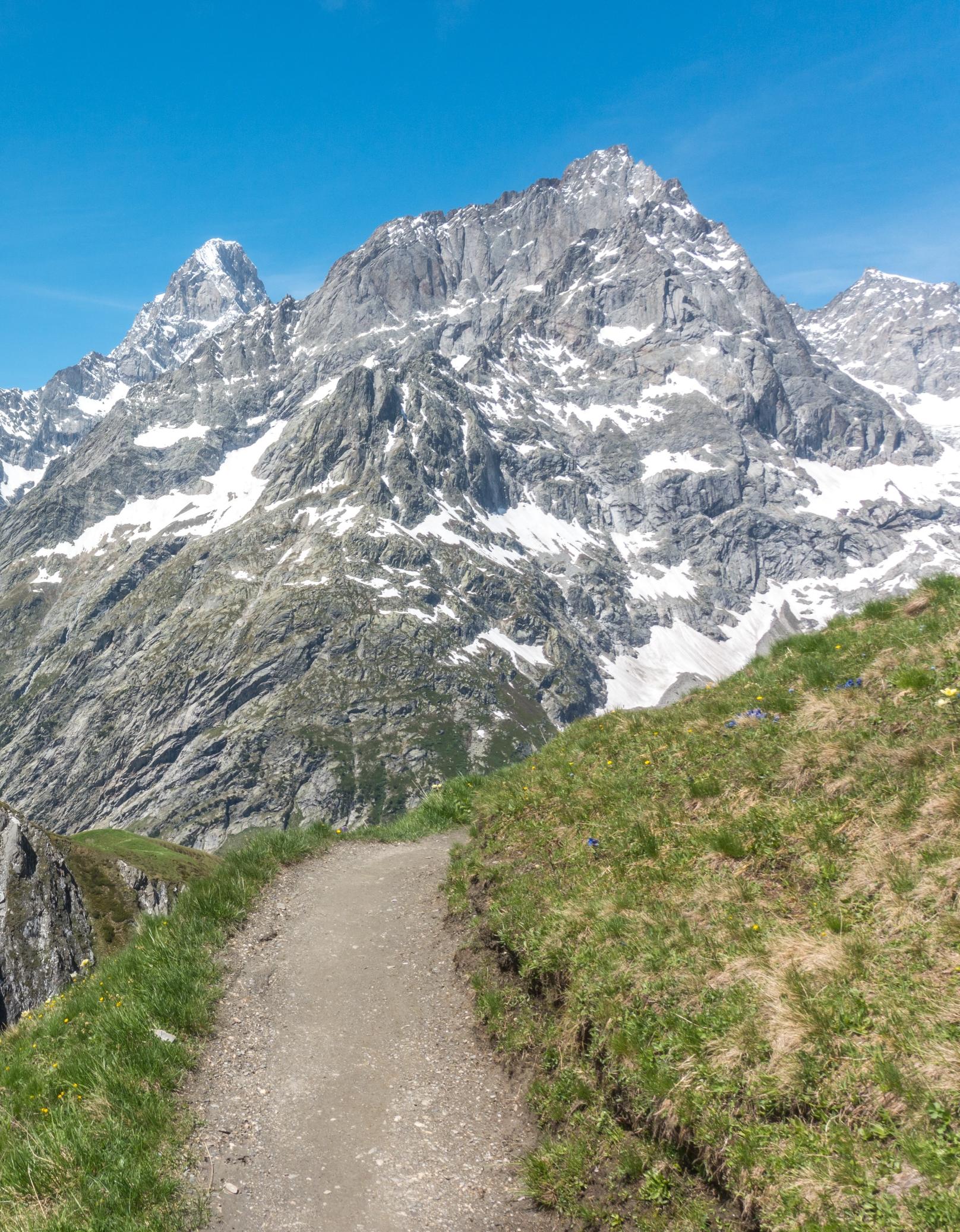
The main difference between the Haute Route and the Tour du Mont Blanc (TMB) is difficulty and elevation. The Haute Route is longer (137 miles/220km), more demanding, and reaches higher altitudes, while the TMB is shorter (105 miles/170 km), more popular, and offers more accommodation options along the route.
“On the Haute Route, you're often walking up at close to 3,000 metres, really close to the edge of glaciers,” says Grant. “Compared to a route like the TMB where you're walking through the valleys, you're really spending a lot of time up in the mountains. Once you get away from the villages, it's quite often very quiet. You’ll find more hikers along the Tour du Mont Blanc.”
Grant recommends walking the Tour du Mont Blanc first, and then trying the more difficult Haute Route afterwards. However, it is worth noting that the Haute Route and the Tour du Mont Blanc do share a few days in common, from Chamonix to the mountain resort of Verbier.
The Matterhorn Circuit
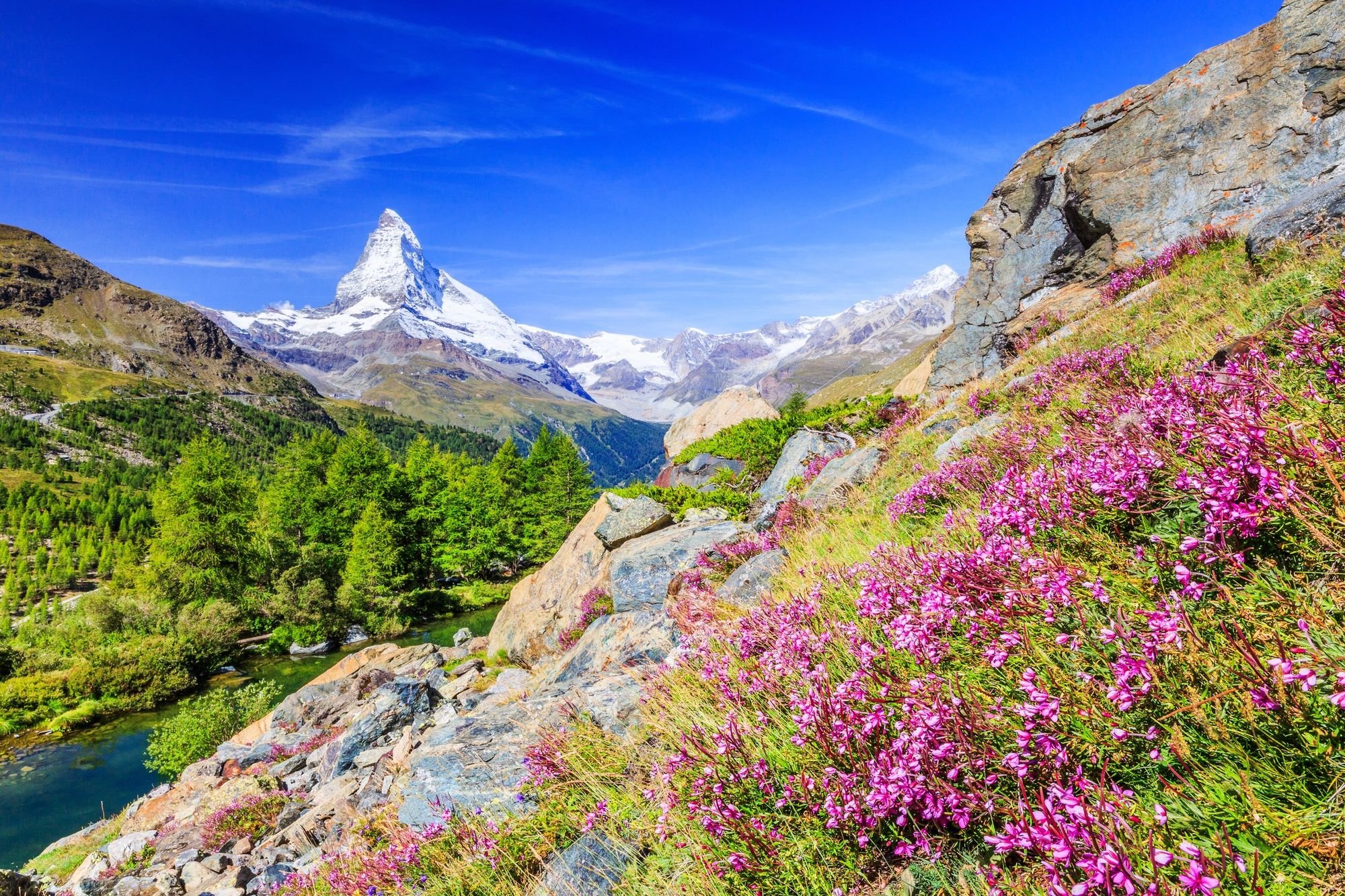
- Countries: Switzerland, Italy
- Distance: 93 miles (150km)
- Duration: 8–10 days
- Difficulty: Challenging
This demanding walking route takes walkers to exposed high mountain paths, down deep green valleys, across alpine pastureland and glaciers and past glimmering mountain lakes. It circles the Matterhorn, which sits 4,478m-high (14,691 ft) on the border of Italy and Switzerland, the razor-sharp ridgeline leading up to its distinctively crooked peak.
The route begins in Zermatt, following the same route as the Haute Route (often in reverse)—hiking along the Europaweg to the Europahütte across the Charles Kuonen Suspension Bridge, through the Mattertal Valley to Gruben and then on to Zinal and Arolla. But whilst the Haute Route continues on through Italy and France in a point-to-point traverse, the Matterhorn Circuit loops round to circumnavigate the mighty Matterhorn.
From Arolla, cross the Haut Glacier d'Arolla (ice axe, crampons, and proper usage essential). Walk to Collon Pass (3,069m/ 10,668 ft) on the Swiss-Italian border, then descend the Italian side. Hike to Colle di Valcournera (3,073m/10,082 ft) for tough but scenic views of Mont Dragon and Grande Lago. Your final day travels between the towns of Breuil-Cervinia and Zermatt, with panoramic Matterhorn views.
Terrain & Difficulty Level
A spectacular circuit around the iconic Matterhorn, this route is physically demanding, with long, steep ascents, rugged sections and two glacier crossings. Altitude gains can exceed 1,200m (3,937 ft) per day, and some stages include exposed traverses and snow patches, even in summer.
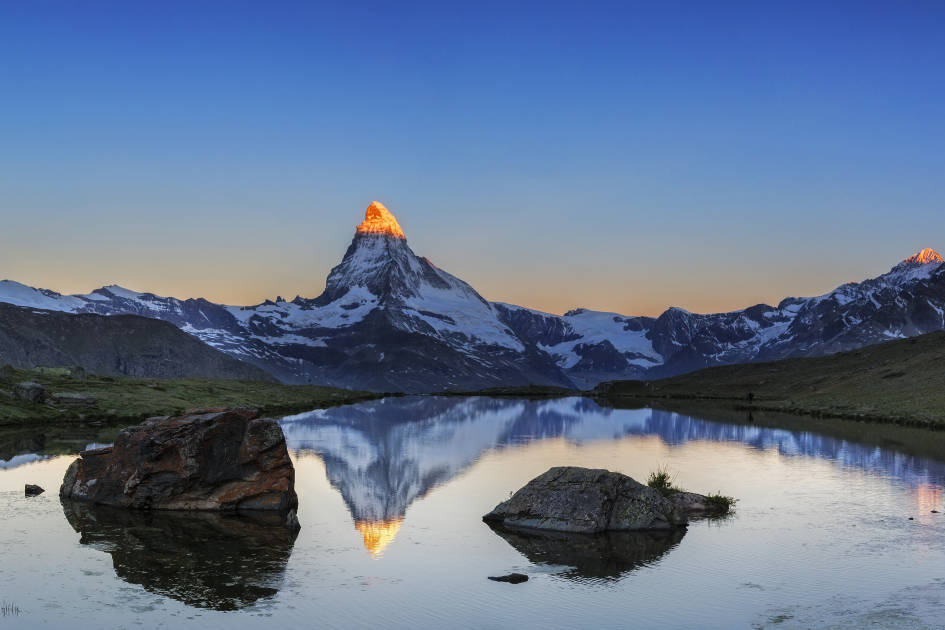
Services
You’ll find a good range of services in Zermatt, but some sections of the trail are more remote. Accommodation consists of mountain refuges, or small local guesthouses in the quiet villages you’ll be visiting. Like the Haute Route, luggage transfer services are available, but you won’t be reunited with your luggage every day.
Recommended For
Best for experienced mountain hikers comfortable with long days on the trail, who are looking for a quiet, remote hiking circuit.
Conclusion: Tour du Mont Blanc vs Matterhorn Circuit vs Haute Route
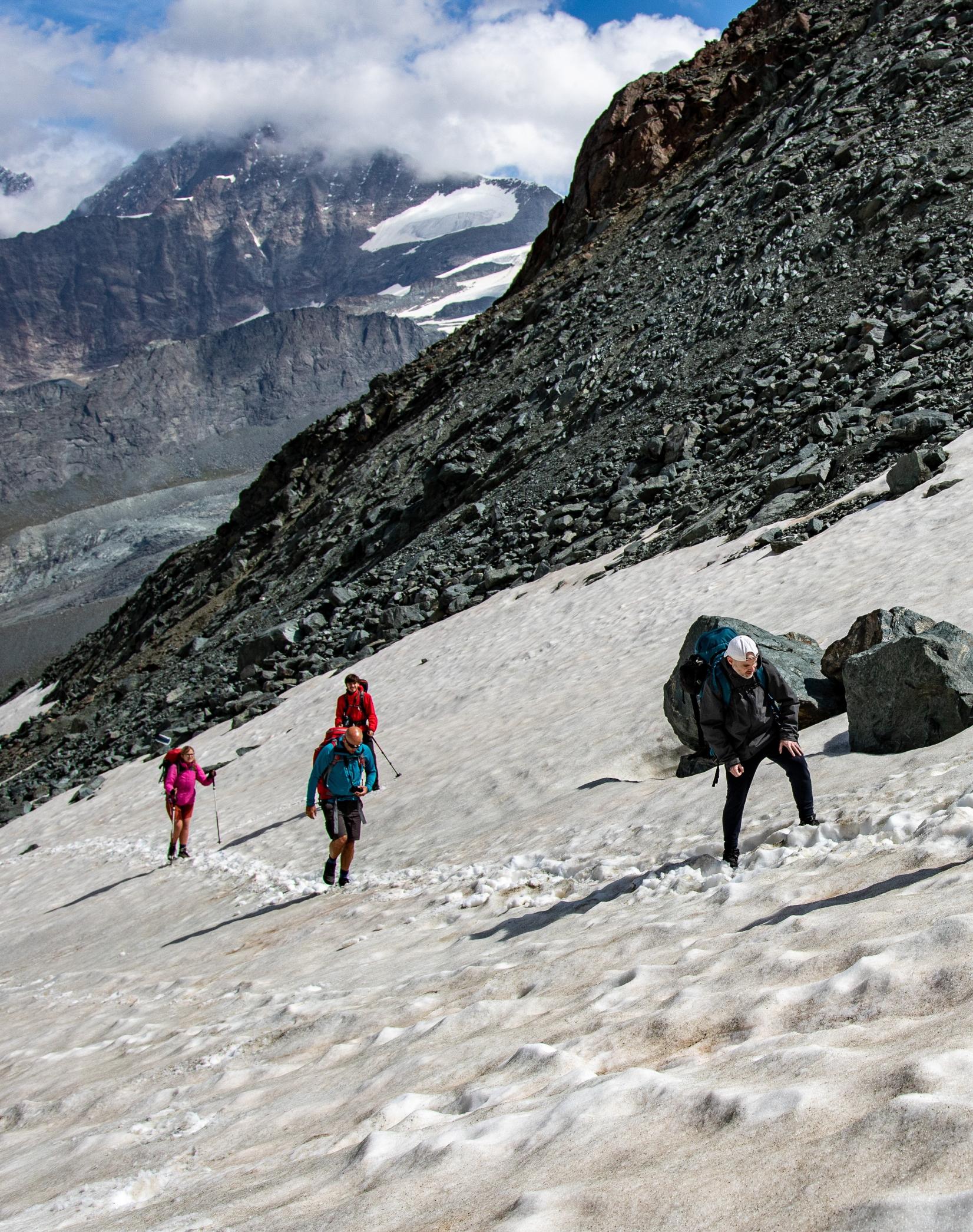
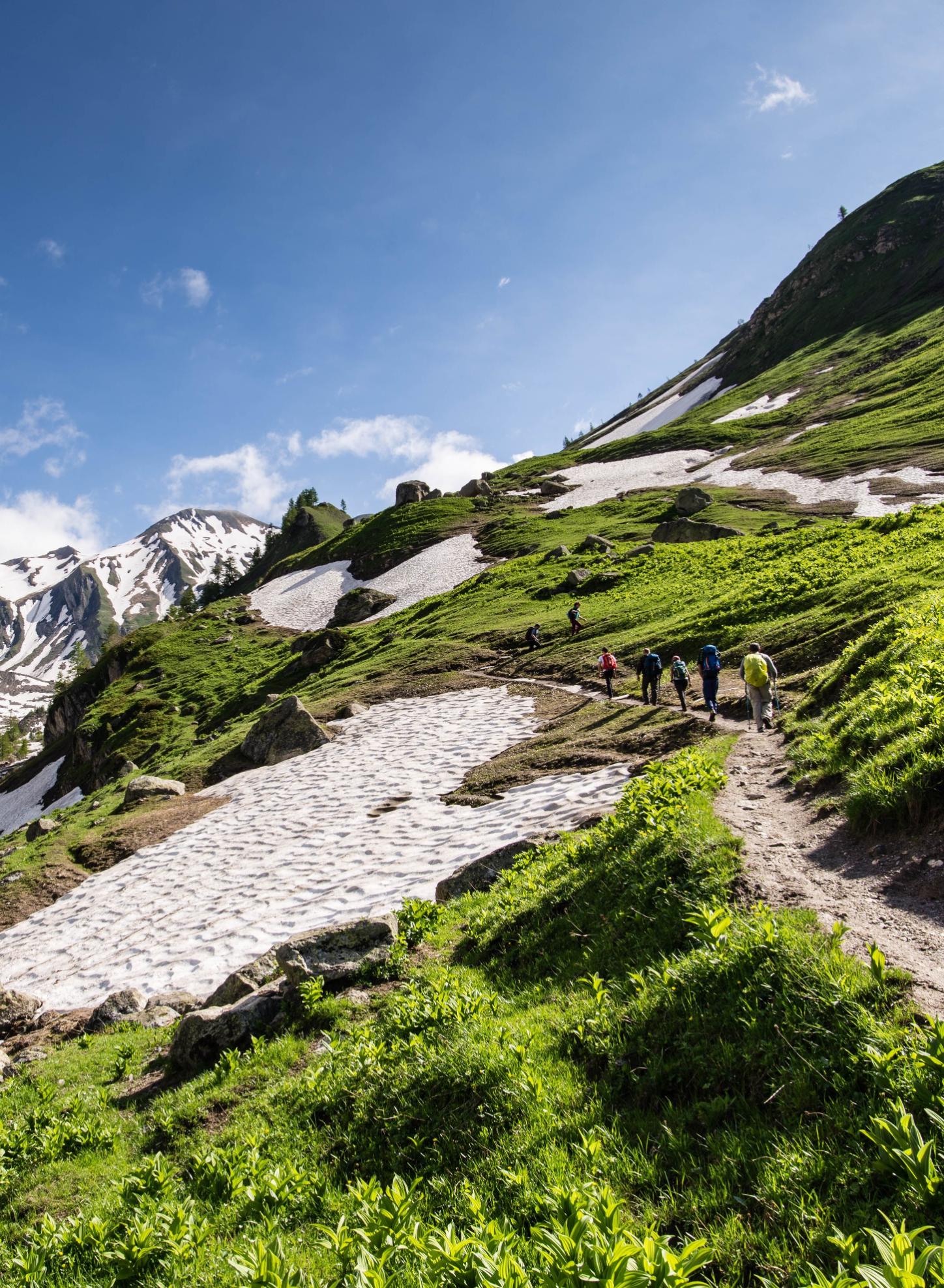
The main difference between the Tour du Mont Blanc and the Matterhorn Circuit is location and terrain. The TMB loops around Mont Blanc through France, Italy, and Switzerland, offering accessible trails and frequent lodging. The Matterhorn Circuit circles the Matterhorn in Switzerland, with steeper, more remote trails suited for experienced hikers.
The Matterhorn Circuit follows the path of the Haute Route from Zermatt to Arolla. However, while the Haute Route continues on towards Italy and France (Chamonix), the Matterhorn loops around the iconic Matterhorn peak. The two hikes are of similar difficulty level, with the Haute Route being considered slightly harder due to its length.
Alta Via 1
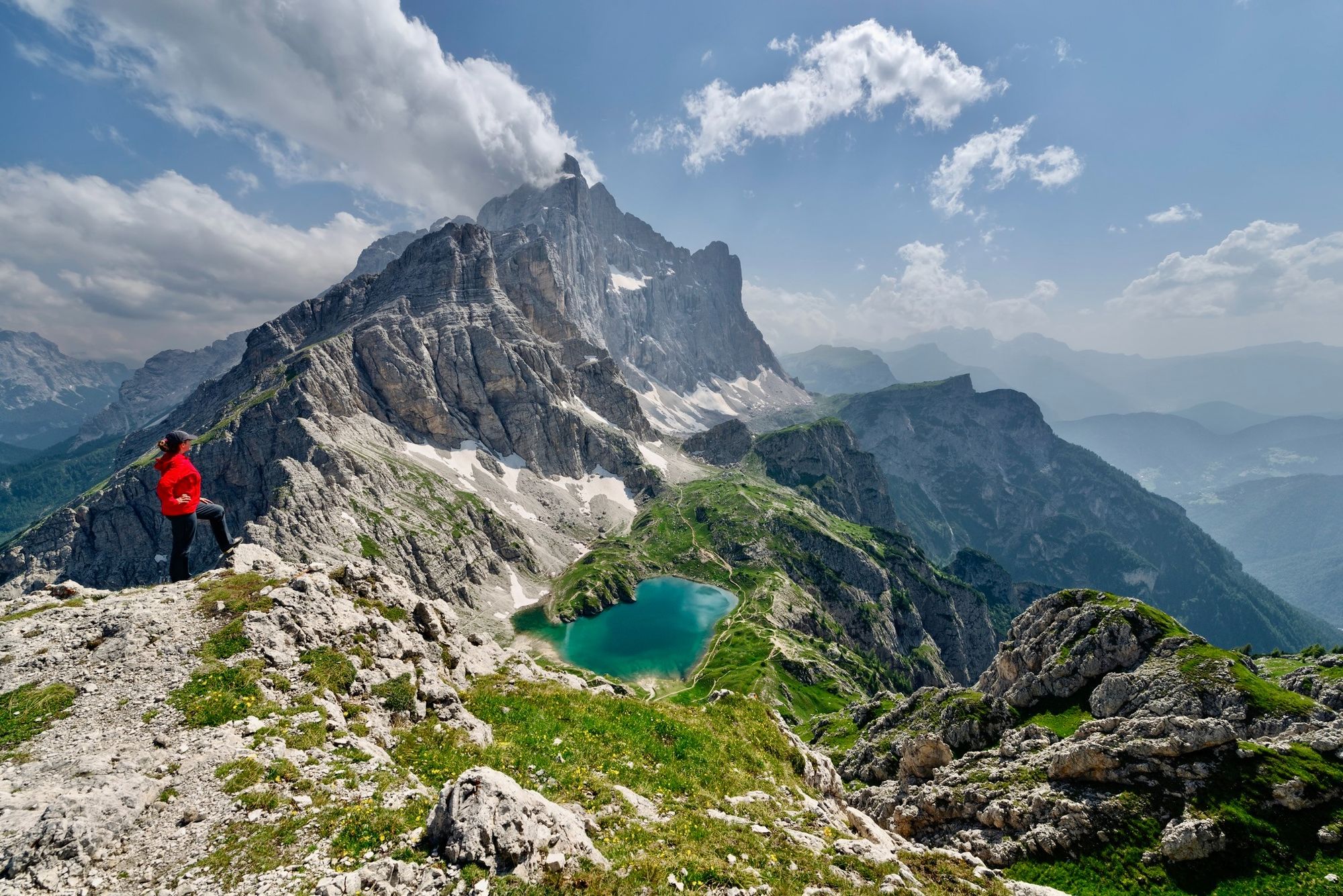
- Country: Italy
- Distance: 71.4 miles (115km)
- Duration: 9–11 days
- Difficulty: Challenging
Beginning at the breathtaking Lago di Braies, the Alta Via 1 winds through the wild, mountainous terrain of the Dolomites. The path takes you up to Rifugio Biella and Rifugio Fanes, surrounded by high limestone spires, before descending to the Alpe di Fanes, a scenic pastureland. You’ll then climb up to the Rifugio Lagazuoi, the highest point on the AV1 at a height of 2,752m (9,029ft), before passing through the famous Cinque Torri rock formations to Rifugio Nuvolau.
The path crosses through rocky slabs on a fixed rope, descending to Passo Giau. The landscape changes to wooded hills and pastureland as you climb up towards Rifugio Coldai. From the Refugio Coldai, you’ll climb upwards past the mighty Civetta mountain, with its vast limestone wall, ultimately descending through dense forest to Rifugio Vazzoler. There are a couple more ascents and descents before reaching the Van di Zità, which consists of several high limestone basins, reminiscent of lunar craters. You’ll pass through it before descending through beech and fir forests to La Pissa.
Terrain & Difficulty Level
This trek takes you through the Dolomites, where you’ll be climbing steep exposed paths in the mountains.
“The terrain is very rude and rough,” says destination expert Miki Anastasio. “The most dangerous and difficult part of Alta Via 1 is the Van di Zità. “You have to be very aware of where you put your feet.”
Services
The Alta Via 1 path doesn’t descend to villages like the Tour du Mont Blanc, so baggage transfer isn’t possible along the route. Accommodation options are primarily restricted to mountain huts (known as ‘refugio’ in Italy). They offer bunkhouse accommodation and hearty meals.
“The huts along the Alta Via 1 are not five star hotels, but the atmosphere is always five star. You can eat very well; you sleep very comfortably,” Miki says.
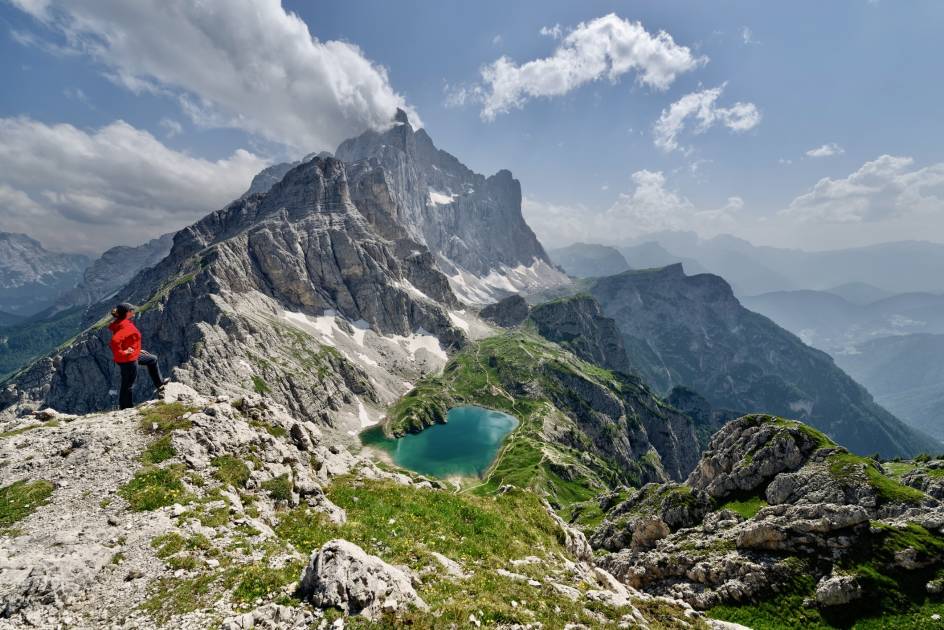
Recommended For
Experienced hikers interested in immersing themselves in the wild landscapes of the Dolomites. You’ll need to be fit enough to hike with all the clothing and gear you need for the duration of the trip.
Conclusion: Tour du Mont Blanc vs Alta Via 1

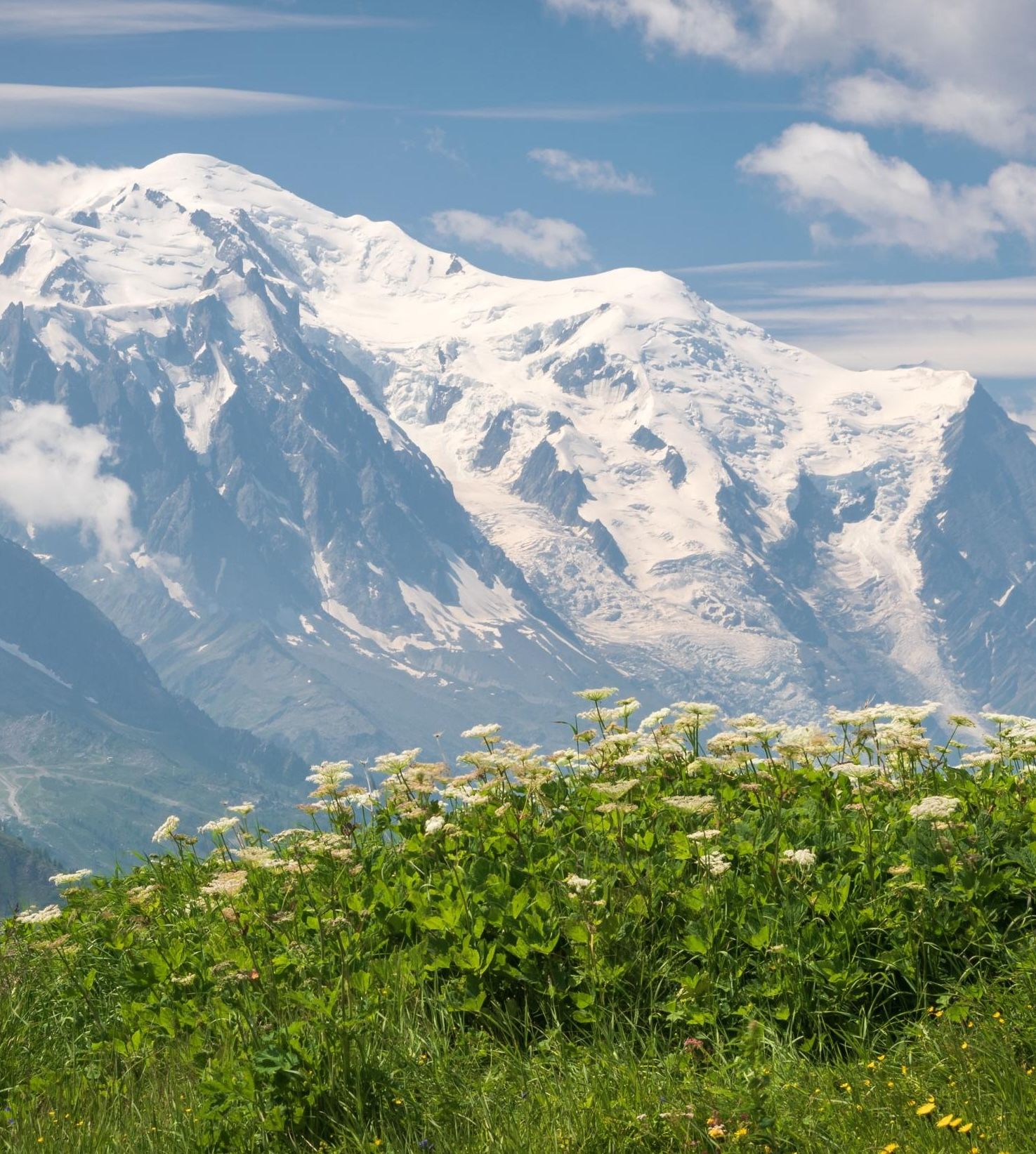
The main difference between the Tour du Mont Blanc and Alta Via 1 is location and difficulty level. The TMB circles Mont Blanc through France, Italy, and Switzerland, while Alta Via 1 runs through Italy’s Dolomites. While the Tour du Mont Blanc is a longer trek with greater elevation gain, the Alta Via has steeper, rockier and more exposed terrain. There is also the option for luggage transfer on the former.
Tour del Monte Rosa
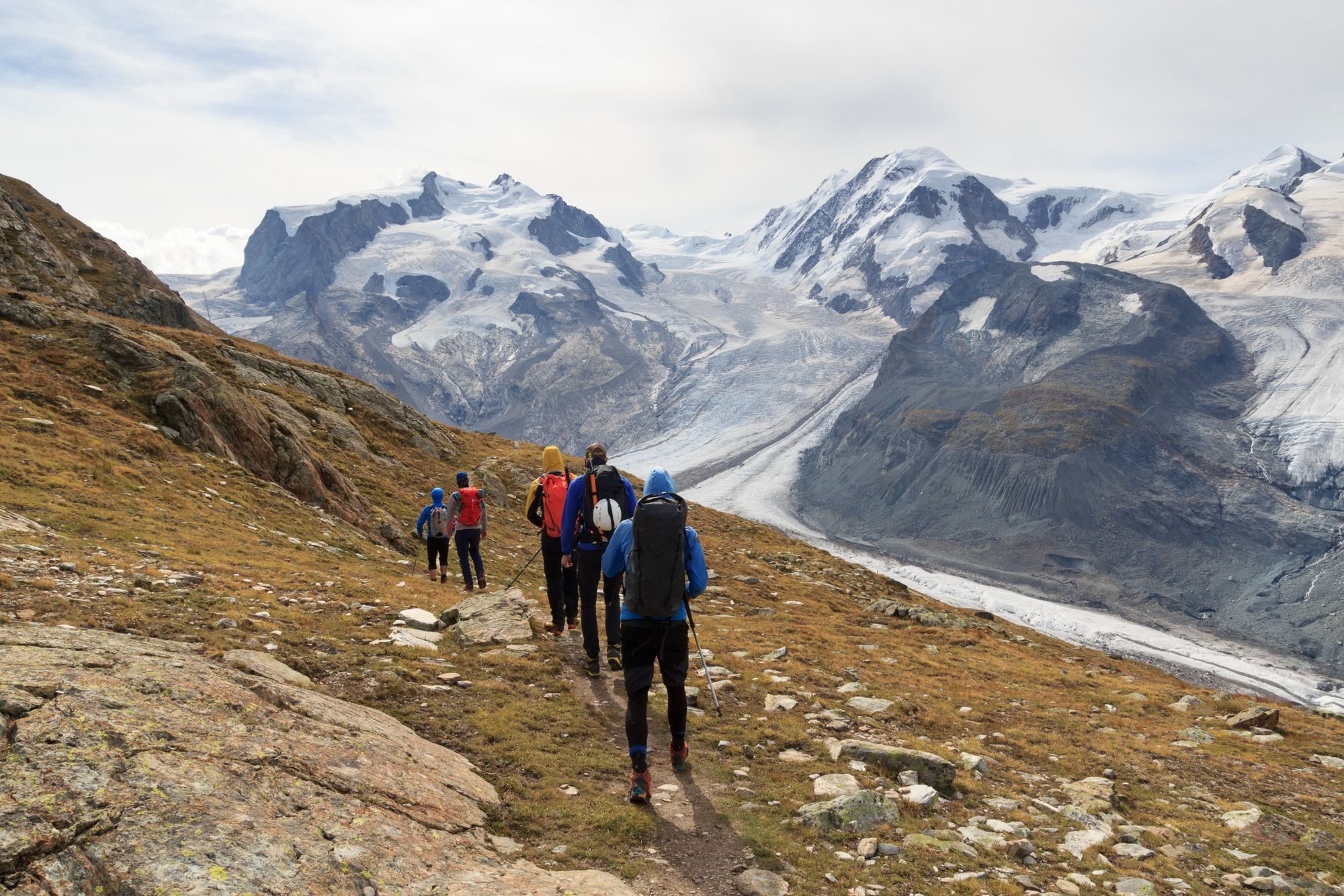
- Countries: Italy, Switzerland
- Distance: 104 miles (167km)
- Duration: 8–11 days
- Difficulty: Tough
This lesser-known hiking circuit traverses the mountain plateau of Monte Rosa (4,634 m/15,203 ft). It’s a demanding but highly rewarding route, which showcases one of the world’s great mountain ranges—and without the same footfall that you might get on other hikes in the Alps.
Most people begin the hike in Zermatt, where you’ll begin with an ascent across the Theodul glacier and up to the Theodul Pass, the highest point on the route at 3,317m (10,883 ft). From here, you’ll descend to the refuge at Resy via Ventina, a rarely-visited valley bursting with colourful flora. The next stages of the hike take you through dense larch forest and on an ascent through the dramatic rocky landscapes of Col d’Olen.
After this, the trail crosses Colle del Turlo (2,738m/8,982ft) and descends to the lush Quarazza valley. The next stage sees you climb up to the Monte Moro Pass (2,853m/9,360m), where you’ll have spectacular views of Monte Rosa. Descend to the mountain town of Saas Fee. Follow the Höhenweg, a picturesque balcony trail, to Grachen. The final two days take you back to Zermatt via the stunning Europaweg, the short trail you’ll also follow when hiking the Matterhorn Circuit and the Haute Route.
Terrain & Difficulty Level
We’ve graded this trek ‘tough’, our highest difficulty rating. You’ll be hiking long distances over alpine terrain, with a total elevation gain of 10,654m (34,954ft)—the highest point on the route is 3,317m (10,883 ft)—and crossing a glacier. All of this while carrying a heavy pack.

Services
You’ll find fewer hikers along the trail than the Tour du Mont Blanc, and travel through remote terrain. Although accommodation is primarily in mountain huts, the trail does pass through several villages, such as Alagna, offering a wider variety of hotels and restaurants. As much of the route is inaccessible by road, however, hikers will need to carry their own luggage.
Recommended For
Experienced hikers looking for a remote route through the Alps. We’d recommend tackling this route after undertaking treks such as the Tour du Mont Blanc or the Matterhorn Circuit.
In Summary: Tour del Monte Rosa vs Tour du Mont Blanc
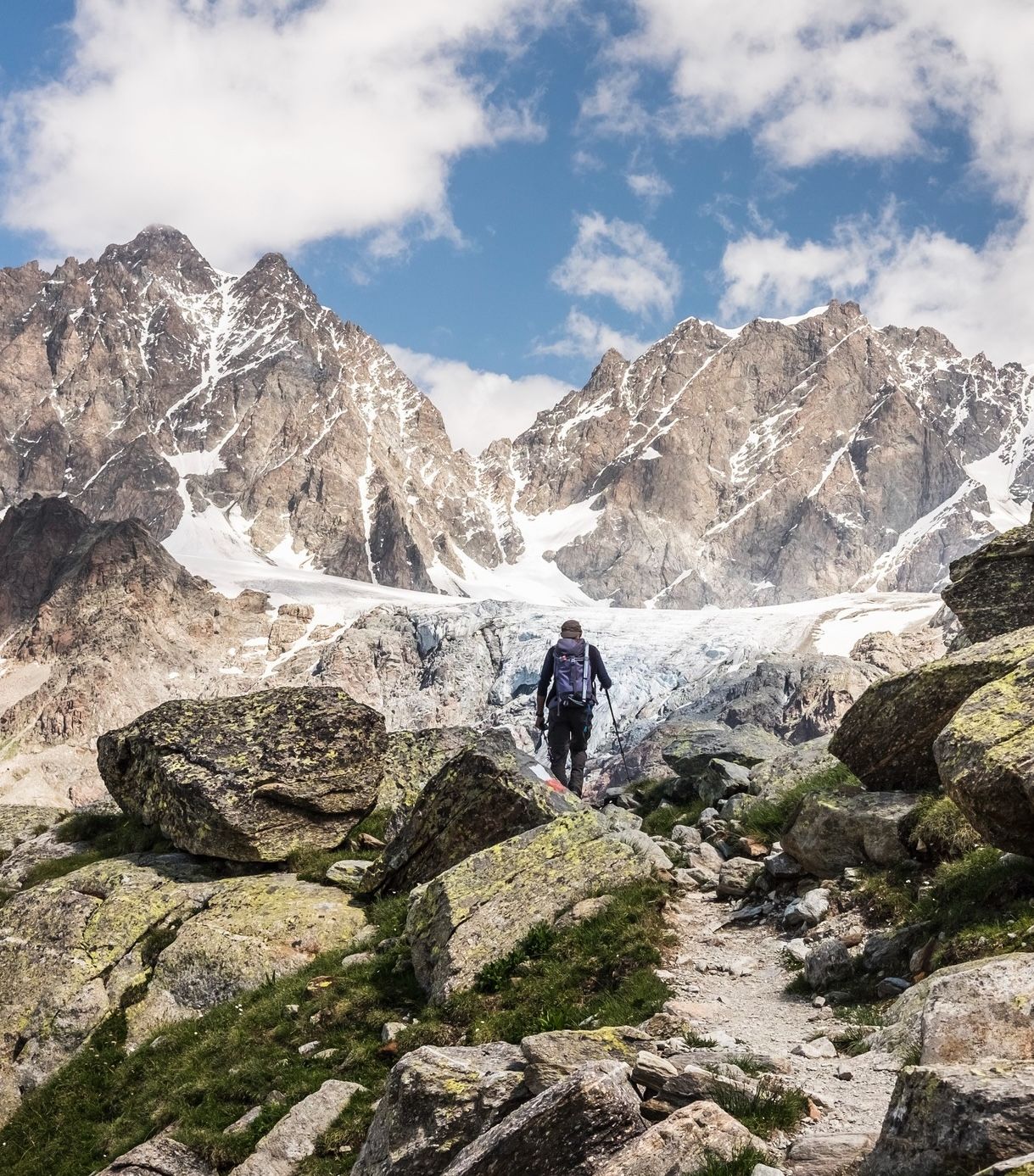

The main difference between the Tour del Monte Rosa and the Tour du Mont Blanc is remoteness and difficulty. The Monte Rosa route is longer, steeper, and less travelled, circling the Monte Rosa massif through Switzerland and Italy. The TMB is more popular and accessible, with more infrastructure and lower daily elevation gains.
Which Trek in the Alps Should I Do?
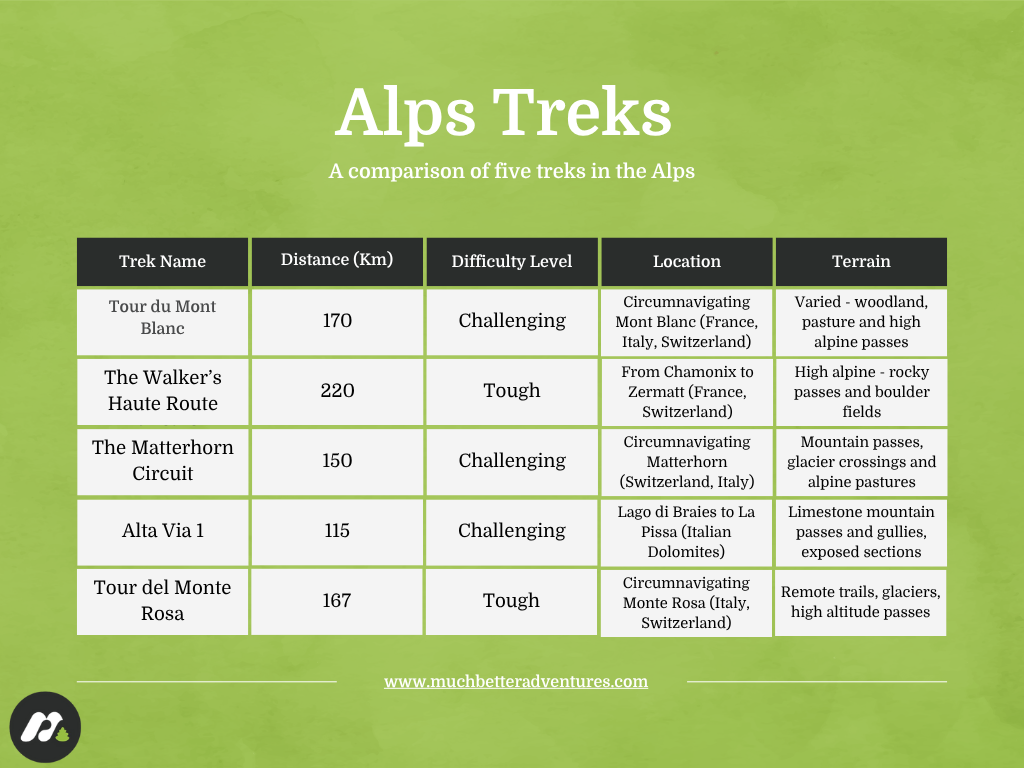
The trek you ultimately decide to do will depend on several factors, specifically the locations you’d like to visit and your experience level. This table summarises the key factors of each trek, and should help you make your decision.
Ultimately, we'd recommend the Tour du Mont Blanc for first-timers, as you'll be able to experience the iconic scenery surrounding Mont Blanc, whilst hiking on slightly easier trails than the other four treks. Once you've completed the TMB we'd suggest the Haute Route or Matterhorn Circuit for those wanting to increase the level of challenge, Tour del Monte Rosa for those in search of remoteness, and Alta Via 1 for those wanting to explore a different area of the Alps.
Inspired? Check out our Epic Hiking Adventures in the Alps.



